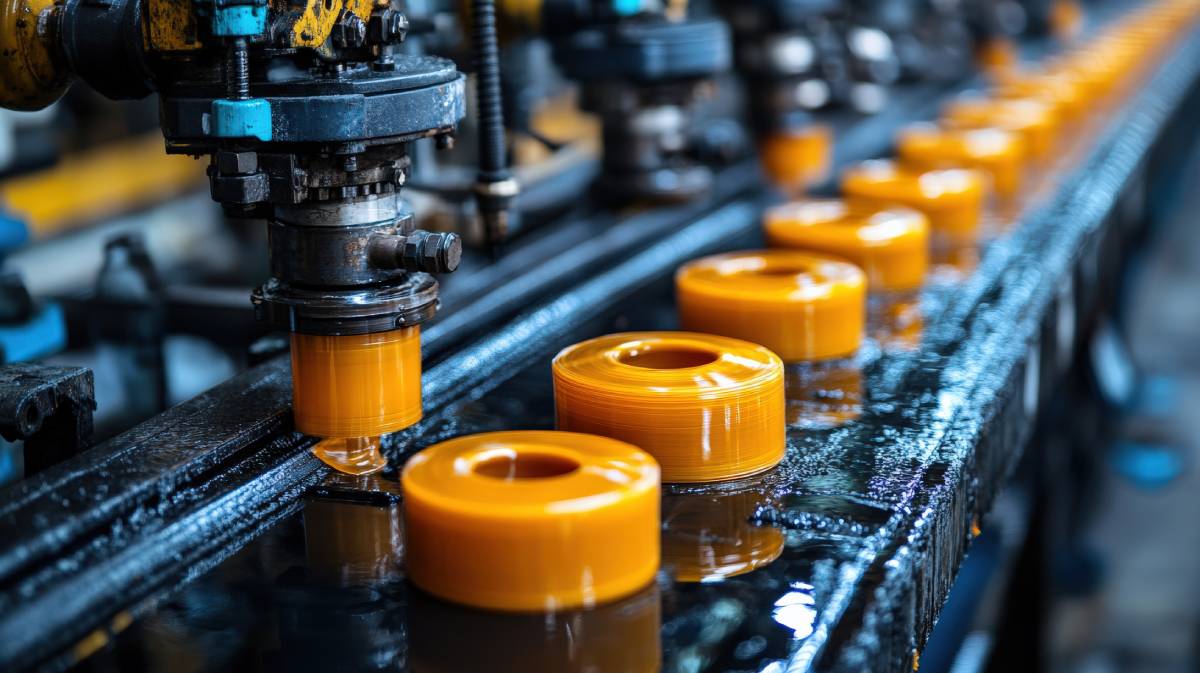
07 Jul What Is PPAP (Production Part Approval Process)?
At its core, the Production Part Approval Process is a quality assurance framework that requires manufacturers to meet strict requirements before mass production starts. It helps companies like I.B. Moore Manufacturing maintain consistent quality standards and meet customer specifications. Due to its effectiveness, this approach has expanded across multiple manufacturing sectors; it also prevents costly production errors.
What is the Production Part Approval Process?
This comprehensive process obligates suppliers to demonstrate their ability to produce parts meeting established specifications. It involves extensive documentation, testing, and verification that we complete before a production run receives approval.
PPAP minimizes risks associated with defective parts, production delays, and quality failures that could impact end products. It’s not a government or industry law—it’s a standard developed by the Automotive Industry Action Group (AIAG), a private industry organization.
Our manufacturing team supports PPAP without fail.
PPAP Documentation Requirements
The heart of PPAP is its detailed documentation structure, with eighteen specific elements that apply to:
- Design records
- Engineering change documentation
- Customer engineering approval
- Design failure mode and effects analysis (DFMEA)
- Process flow diagrams
- Process failure mode and effects analysis (PFMEA)
- Control plans
- Measurement system analysis studies
- Dimensional results
- Records of material and performance test results
- Initial process studies
- Qualified laboratory documentation
- Appearance approval report
- Sample production parts
- Master sample
- Checking aids
- Customer-specific requirements
- Part submission warrant
Each element serves a specific purpose. For instance, design records establish the foundation for part specifications, while engineering change documentation tracks modifications throughout development. Customer engineering approval ensures alignment between supplier capabilities and buyer expectations; process flow diagrams visually represent manufacturing steps. All can identify potential quality concerns before production commences.
What is PPAP Submission Level Documentation?
The Production Part Approval Process operates through five submission documentation levels, each needing documentation and sample parts.
- Level 1: Part submission documentation and sample parts.
- Level 2: Part submission documentation with product samples and limited supporting data.
- Level 3: Part submission documentation, product samples, and complete supporting data.
- Level 4: All Level 3 requirements plus additional customer-specified requirements.
- Level 5: All previous level requirements with additional customer-specific documentation.
Ways to Drive PPAP Success
Successful PPAP implementation starts with careful design analysis and planning of parts manufacturing. During the early design stages, the I.B. Moore Manufacturing team considers what materials to use, measurement precision, what the surface should look like, and how the part should perform.
Testing measurement equipment is essential for PPAP success because it confirms that inspection tools give accurate and consistent results. Special studies check whether the same person gets the exact measurement repeatedly and whether different people get similar results when measuring the same part. Properly calibrating and documenting equipment keeps measurements accurate during testing and when full production begins.
Quality Control Integration Throughout PPAP
What is the production part approval process? Without quality control, it’s ineffective. PPAP quality control plans spell out exactly where to inspect parts, how to measure them, and what to do when parts don’t meet requirements. These steps check incoming materials, monitor the manufacturing process, and verify the final product. Smart sampling methods determine how often to inspect parts and meet quality standards.
Can I.B. Moore Create PPAP-approved Parts For Custom Applications?
Yes. Manufacturing companies that make custom parts can adapt PPAP principles to meet each client’s unique needs. Different customers may require specific paperwork, inspection methods, or other requirements based on industry standards and how they assess risk. Being flexible with PPAP implementation allows I.B. Moore Manufacturing to meet customer needs while maintaining exceptionally high quality.
Custom part manufacturing involves different materials, specialized processes, or unusual shapes that require modified PPAP approaches. We frequently follow specific industry standards, like aerospace requirements or automotive regulations. We’re always ready to adjust PPAP procedures while adhering to the core principles of quality validation and process control.
Client-specific standards may include extra testing, longer capability studies, or specialized formats. We can handle all that while keeping processing times efficient. Regular communication with our clients throughout the PPAP process means their expectations match what gets delivered.
Partner with Our Precision Manufacturing Experts
I.B. Moore Manufacturing combines decades of precision manufacturing experience with full-on PPAP capabilities to deliver parts that exceed customer specifications. We prioritize proper documentation, process validation, and quality control in custom manufacturing applications. Let’s talk about how our PPAP expertise can support your next project. We provide nationwide service; contact us in Lexington, KY, to request a quote.
